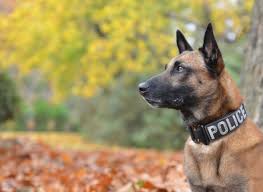Can a reactive dog be trained? Dogs of any age can start training to improve their reactivity. You do need to keep in mind that the longer a behavior has been ingrained, the longer it will take to retrain the dog. Whether or not the dog will be “cured” in the sense of being completely fine in the presence of his triggers cannot be predicted.
How do I train my dog to be less reactive?
6 Ways to Calm Your Reactive Dog
- Set Up a Routine. It’s not something dog owners think of very often or are even aware of, but dogs absolutely crave routine.
- Get Essential Equipment.
- Counter Conditioning.
- Household Changes.
- Body Language.
- Sign Up for a Behavior Rehab Class.
Can dogs overcome reactivity? Can Reactive Dogs Be Rehabilitated? If you observe your dog and you conclude that yes, what he shows is indeed reactivity, don’t worry: Reactive dogs can improve. The first important step is to not let the dog ingrain his reactivity anymore. For most owners this means making changes in their daily life.
How do I stop my dog being reactive to other dogs?
Can a reactive dog be trained? – Additional Questions
How do I train my dog to ignore other dogs on walks?
Why does my dog go crazy when he sees another dog?
1. Poor socialization and learned behavior. One of the most common causes of regular reactivity is poor socialization. Socialization is the process of introducing young puppies to other dogs and people so they know how to interact safely with others.
How do you socialize a reactive dog?
Below you’ll find several tips on how to socialize adult dogs.
- Walk your dog daily — and introduce them to other dogs.
- Use a muzzle when other dogs are coming over.
- Safely expose your dog to different social activities.
Why is my dog aggressive towards some dogs but not others?
Aggression between unfamiliar dogs can be due to fear, poor communication, defensive, possessive behavior over resources (including perhaps family members or other pets) or territorial behavior over territory or owner. Aggression between dogs can result in injury to dogs and/or to the people trying to separate them.
Is it too late to socialize a dog?
It’s never too late to socialize an adult dog. If your woof lacks experience in the world, take them outside and get started today. We wish you the best of luck and, when your pooch is ready, we’d love to see them at Hounds Lounge for doggie daycare!
What should you not do after a dog fight?
How To Break Up a Dog Fight and What To Do After
- There are generally 2 types of fights.
- Don’t: Wait until a fight to think about how to break it up.
- Don’t: Panic or yell.
- Don’t: I don’t suggest grabbing the back of the collar or reaching in with your hands but I have done it.
- Don’t: Don’t hit, punch, or yell.
How do you break a dominant dog?
The 9 Ways to Stop Dominant Behavior in Dogs:
- You Need to Be Calm. Dogs feed off our energy.
- Set Rules and Boundaries.
- Do Not Allow Him Onto the Bed or Sofa.
- He Has to Work for Things.
- Always Eat Before Him at Mealtime.
- Make Sure He Gets Enough Exercise.
- Do Not Force Affection.
- Always Reward Good Behavior.
How do I show my dog I am the Alpha?
How Do I Make Myself the Pack Leader of My Dog?
- Adopt an “Alpha First” mentality.
- Insist on decorous behavior.
- Communicate with energy.
- Learn how to display alpha behavior.
- Basic obedience training.
- Be consistent and clear with rules.
- Be consistent and fair in correcting bad behavior.
- Control all resources.
How do you know if your dog is trying to dominate you?
Signs of dominant behavior in dogs:
Resistance to voice commands. Aggressive response to eye contact or verbal correction. Food guarding or other aggressive behavior while eating. Persistence about leading the way on walks or through entryways.
How do you discipline a dog that snaps at you?
If a dog snaps at you, that behavior must be stopped. Disciplining your dog doesn’t consist of hitting him and yelling, though he must recognize a firm tone in your voice. Discipline consists of establishing firm boundaries and ensuring your dog recognizes them.
How do you stop a dog from lunging and biting?
WHAT CAN WE DO?
- Put your dog into a sit position BEFORE the dog engaging in the distraction.
- Use positive distractions like a favorite treat or toy to redirect your dog’s attention back to you.
- Reward the dog for doing the right thing (not lunging).
What does it mean when a dog snaps at your face?
Most mouthing is normal dog behavior. But some dogs bite out of fear or frustration, and this type of biting can indicate problems with aggression. It’s sometimes difficult to tell the difference between normal play mouthing and mouthing that precedes aggressive behavior.
Can you train aggression out of a dog?
Is training an aggressive dog possible? Yes. Aggression in dogs, whether it be toward a dog’s owner or other dogs, is a serious behavior that should be adjusted with the help of a professional dog trainer.
How do you walk a reactive dog?
6 Tips for Walking a Reactive Dog
- Set Off With a Calm Frame of Mind.
- Avoid Triggers When Walking a Reactive Dog.
- Turn Triggers Into Positive Experiences.
- Enlist the Help of a Friend.
- Keep Walks Fun and Interesting.
- Don’t Be Afraid to Stand Up For Your Dog.
What percentage of dogs are reactive?
Reactivity is very common: our own research shows that 75% of dog owners say they have a dog that shows some signs of reactivity.
Is my dog reactive or aggressive?
In most cases, a dog displaying aggressive behaviors (lifting his lip, stiffening his body, snarling) is trying to communicate fear or anxiety. If a dog snaps, muzzle punches (pokes with their closed mouth), or bites, that’s when a reactive dog has either been pushed too far or is actually aggressive.
Should you muzzle a reactive dog?
The use of a muzzle has been an important tool in behavior modification if a dog is reactive. The muzzle allows you to be safe as you work around other dogs, or around people. Work with an experienced trainer, of course.




